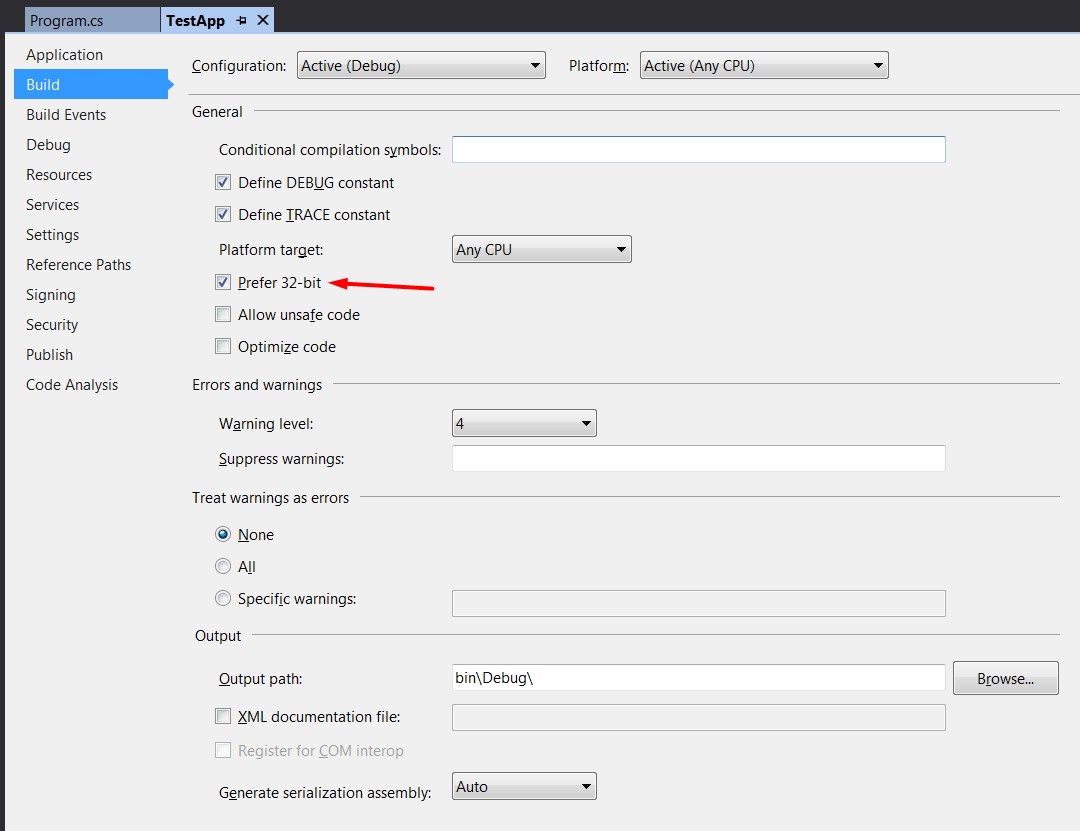Dealing with 32-bit, 64-bit and Any CPU compilation options in .Net
Ever wondered why Visual Studio IDE provides 3 options for compilation - x86, x64 and Any CPU ?
While most are aware of these options, many still lack clarity on the significance of these options (including me earlier in my career). So, as part of this article I hope to clear some of these doubts.
Windows OS has evolved over the years, right to from the time it started out as a 16-bit OS, then transitioned to 32-bit (x86) and more recently to 64-bit (x64).
Why would you use a 64-bit OS over 32-bit? To understand this, lets understand the capabilities of both 32-bit and 64-bit CPUs.
- 32-bit CPU
- Address pointer size is 32 bits -> can access 2^32 (4,294,967,296) discrete addresses.
- This allows a program to make a data structure in memory up to 4 GB in size.
- 64 bit CPU
- Address pointer size is 64 bits -> can access 2^64 (18,446,744,073,709,551,616) discrete addresses.
- This allows a program to make a data structure in memory up to 16 Exabytes in size.
- Main advantages (64-bit over 32-bit)
- Process on a 64-bit CPU can work with a larger set of data compared to 32-bit CPU (only constrained by physical memory).
- A 64 bit integer makes arithmetic or logical operations using 64 bit types such as C#’s
longfaster than one implemented as two 32 bit operations.
- To summarize, for all practical purposes…
- Applications that use large amounts of memory, like Image and video editing software, 3D rendering utilities, and video games will make better use of a 64-bit architecture and operating system, especially if the machine has 8 or even 16 GB of RAM that can be divided among the applications that need it.
Understanding the behaviour of 32-bit, 64-bit and Any CPU compiled PE files:
- On a 32-bit machine:
- Any CPU: runs as a 32-bit process, can load Any CPU and
x86assemblies, will getBadImageFormatExceptionif it tries to load anx64assembly. - Any CPU-32-bit preferred (default): same as Any CPU.
- x86: same as Any CPU.
- x64:
BadImageFormatExceptionalways.
- Any CPU: runs as a 32-bit process, can load Any CPU and
- On a 64-bit machine:
- Any CPU: runs as a 64-bit process, can load Any CPU and
x64assemblies, will getBadImageFormatExceptionif it tries to load anx86assembly. - Any CPU-32-bit preferred (default): runs as a 32-bit process, can load Any CPU and
x86assemblies, will getBadImageFormatExceptionif it tries to load anx64assembly. - x86: runs as a 32-bit process, can load Any CPU and
x86assemblies, will getBadImageFormatExceptionif it tries to load anx64assembly. - x64: same as Any CPU.
- Any CPU: runs as a 64-bit process, can load Any CPU and
Any CPU-32-bit preferred This is a new option introduced starting with .NET 4.5 and Visual Studio 11. It is a new subtype of Any CPU and is also the default compilation option in the IDE.
You can check this in the project properties as shown in the screenshot below …

How 32-bit PEs work on 64-bit architectures ?
- Generally, only 32-bit PEs can be loaded into a 32-bit process, and only 64-bit PEs can be loaded into a 64 bit process.
- When a 32-bit PE is launched on a 64-bit OS, it runs in the “WOW” (Windows-32 on Windows-64) to present an illusion of a 32-bit operating system to the process.
Why was the Any CPU compilation option introduced?
- Now before 64-bit Windows OS was introduced there was just the 32-bit PEs (of course, we are not considering 16-bit OS in this discussion) and hence during compilation these PEs were marked as 32-bit and there was no ambiguity.
- With the introduction of 64-bit Windows OS, a decision had to be made - should the binaries be marked as 32-bit or 64-bit by default?
- Technically speaking, managed binaries have no hard CPU dependency - they could be either 32 or 64 bit.
- However, there was a way required to reuse .Net libraries from both 32-bit and 64-bit processes. For this the OS loader support was extended to support architecture-neutral PE files (Any CPU).
- In case of Any CPU PEs the OS loader decides how to initialize the process. On 64-bit OS’s they are run as 64-bit processes, and on 32-bit OS’s they are run as 32-bit processes.
Hope this post helped clarify a few things!! I’ll also touch upon how to identify the architecture affinity of a PE in a future post.
Abbreviations:
PE : Process Executables (exe’s and dll’s)
References

Leave a Comment